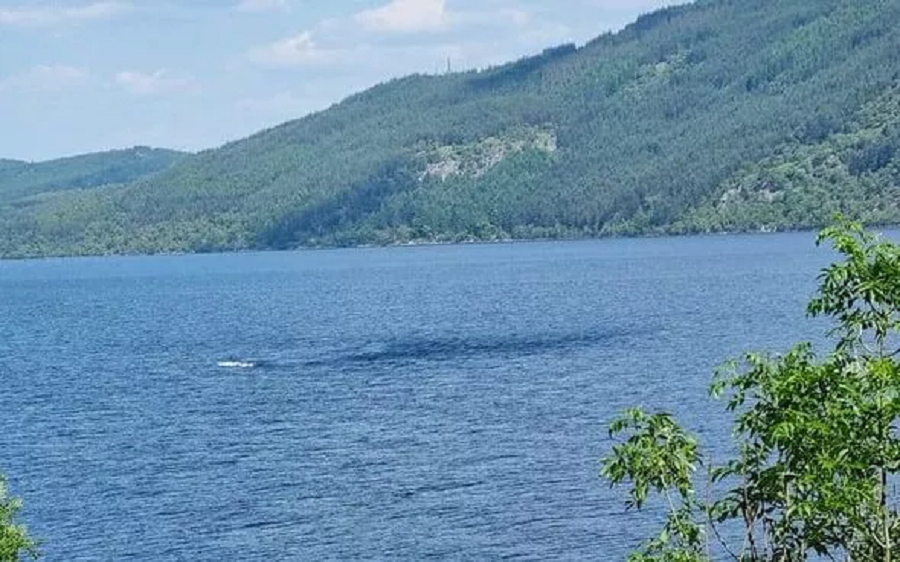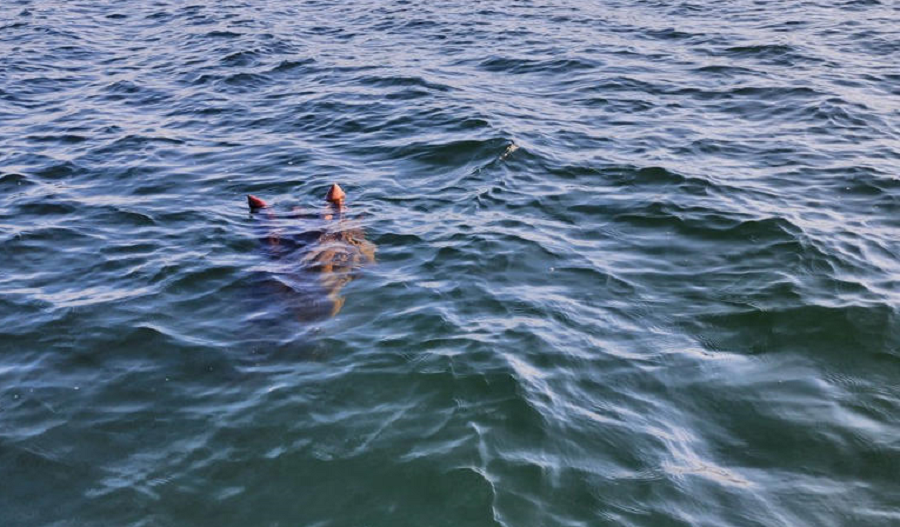Loch Ness at Six "Official" Monster Sightings in 2022
A photo of the object uploaded to The Official Loch Ness Monster Sightings Register. (The Official Loch Ness Monster Sightings Register)
The sighting of a “black lump” that twice appeared on the surface of Loch Ness over the course of roughly one minute has been added to The Official Loch Ness Monster Sightings Register.
This marks the sixth “official” monster sighting in the loch in 2022.
The sighting took place at 5:24 p.m. on October 11th when a mother and daughter visiting from the East of Scotland noticed something in the water.
According to their report:
200 yards off the bank, we noticed a long break in the water which was otherwise still and calm. As we watched, a black lump appeared out of the water and sat for approximately 30 seconds before disappearing once again under the water. After another 30 seconds the black lump resurfaced for a shorter amount of time before disappearing under the water again. The lump appeared to be boxy in shape and about the size of a football. It did not appear to swim about, rather it just bobbed and then disappeared under the water before resurfacing to do the same a second time.
Some believe that sightings of Nessie—as the monster is affectionately known—are indicative of a surviving population of plesiosaurs, although more recent scientific study makes that possibility unlikely.
Plesiosaurs, aquatic reptiles who first appeared in the fossil record around 200 millions years ago and were thought to have died off 66 million years ago (the same time as the dinosaurs), are a popular explanation for the monster said to inhabit Scotland’s Loch Ness; an explanation first introduced in the 1930s and later popularized by naturalist Sir Peter Scott and zoologist Denys Tucker.
Supporters of the hypothesis point to the long necks of plesiosaurs and postulate that this explains why witnesses sometimes describe seeing a neck-like appendage with a small head attached sticking up out of the water.
However, despite recent findings that suggest plesiosaurs were adapted to tolerate freshwater and might have even spent their entire lives in it, a research project published to the Journal of Vertebrate Paleontology by scientist Paul Scofield showed that plesiosaurs were actually very unlikely to ever lift their heads above the water.
It is much more likely, according to Scofield, that plesiosaurs used their long necks to dredge the seafloor.
"They have these enormous teeth arranged in rows like a grappling iron," he explained. "It has been hypothesized that they floated on the surface and dredged the seafloor blowing the dirt out through their teeth and leaving just the clams. Thus, their feeding method dictates the neck length—it's just like the giraffe but in reverse."
Some believers might argue that this only explains why any plesiosaurs inhabiting Loch Ness aren’t seen with their heads above water more often, but Scofield dismisses any belief in the monster entirely.
"I totally reject the idea that Nessie exists and that it is an elasmosaurus," he said. "Loch Ness monster records are a mixture of fakes and mistakes."
Plesiosaurs have begun to fall out of favor as an explanation for Nessie in recent years, following a 2019 study conducted by Neil Gemmell, a New Zealand scientist and professor at the University of Otago.
Gemmell's study involved gathering water samples from multiple locations and at different depths of the loch to scan for bits of animal DNA, and then working to identify it. The samples were sent to labs in New Zealand, Australia, Denmark, and France which used large sequence databases to compare the DNA found in Loch Ness with the majority of known living things. This was done to help distinguish and identify any potentially unknown genetic material.
The results revealed no evidence of any large animals such as sturgeon, catfish, sharks, or surviving prehistoric plesiosaurs, but they did show an abundance of eel DNA.
Many now point to giant eels as a possible explanation for the monster, although, as of yet, no definitive proof of their existence in the loch has been found.
To report your own encounter with the impossible, reach out to us directly at the Singular Fortean Society through our contact page.
If you enjoyed this article and would like to support the Singular Fortean Society, please consider becoming an official member by signing up through our Patreon page—membership includes a ton of extra content and behind-the-scenes access to the Society’s inner workings.




















